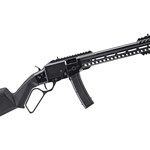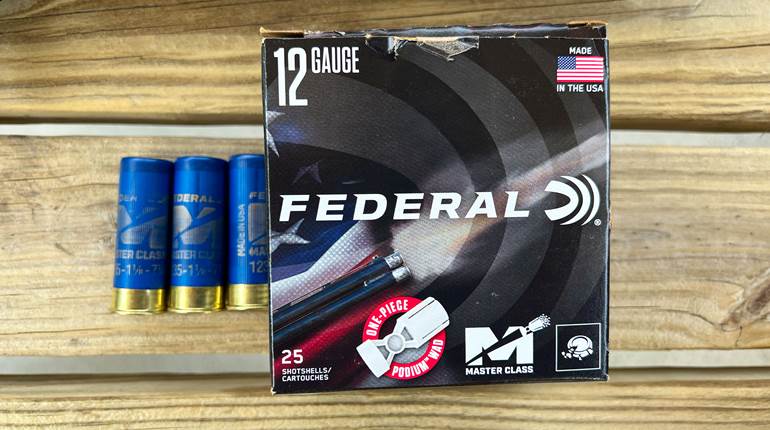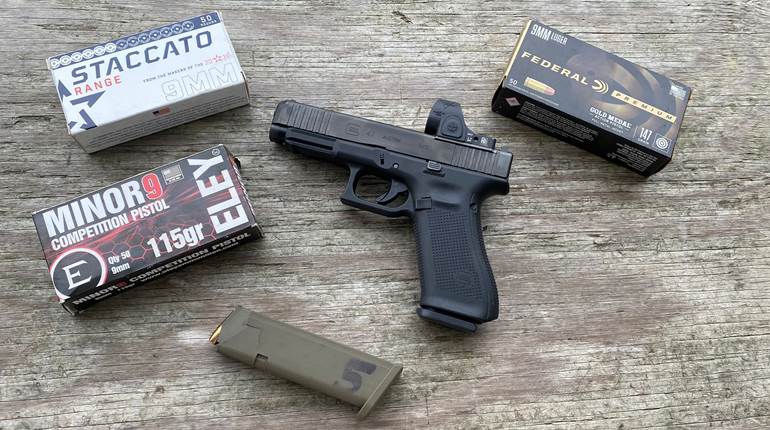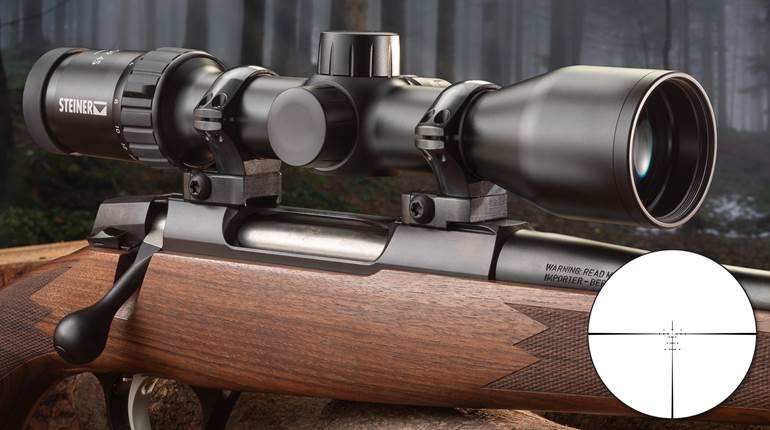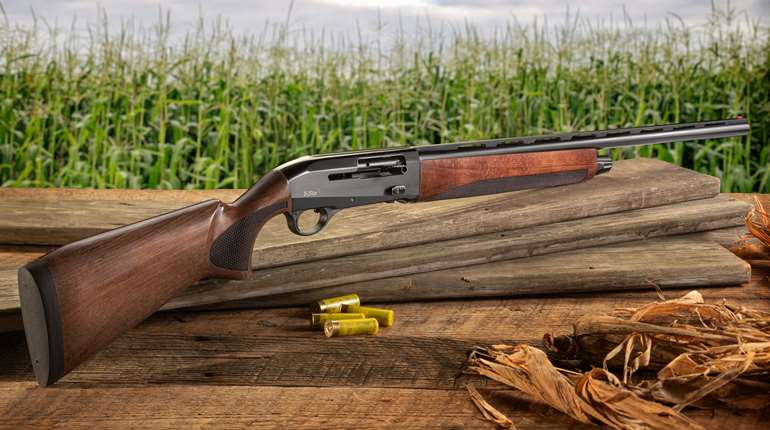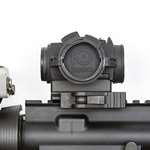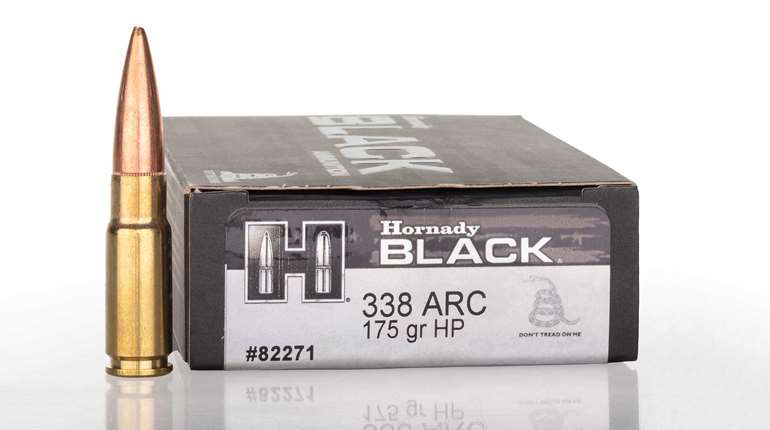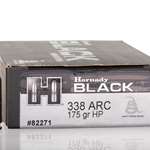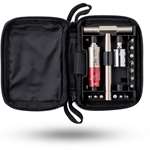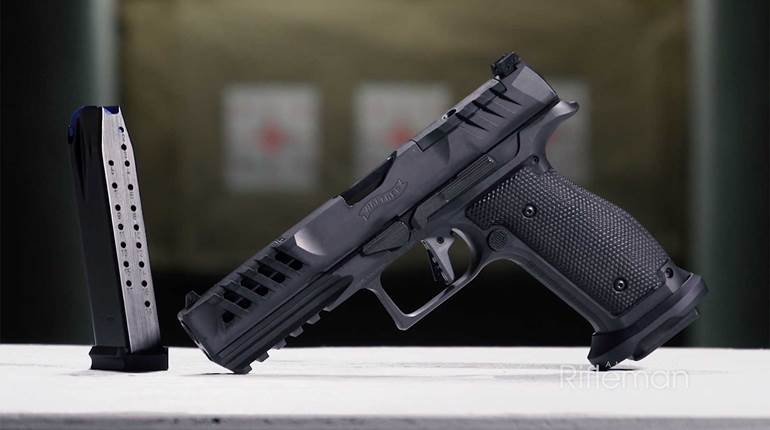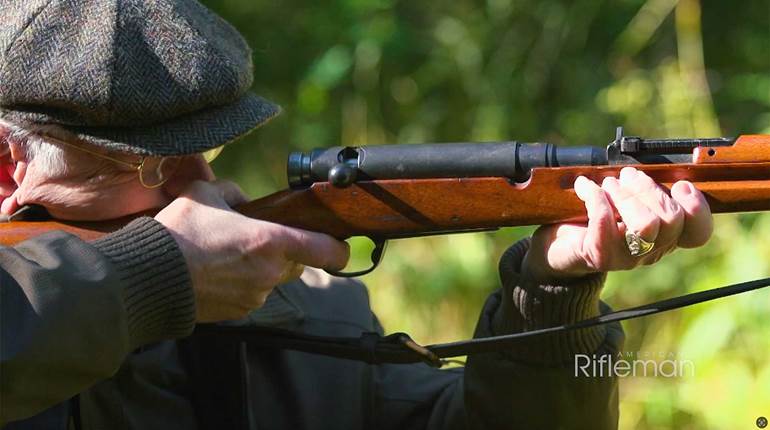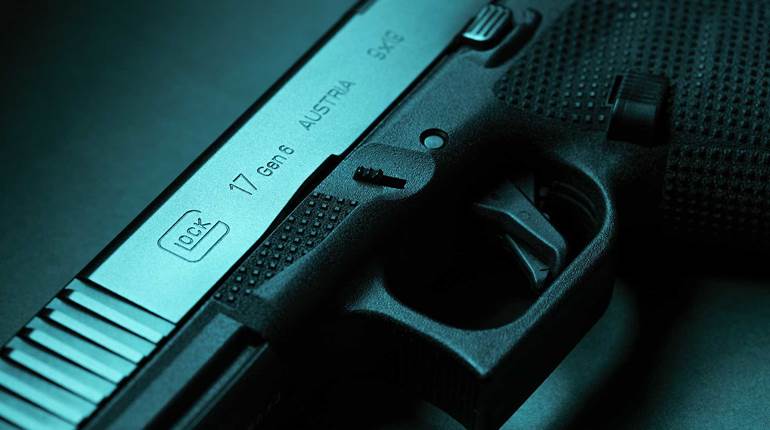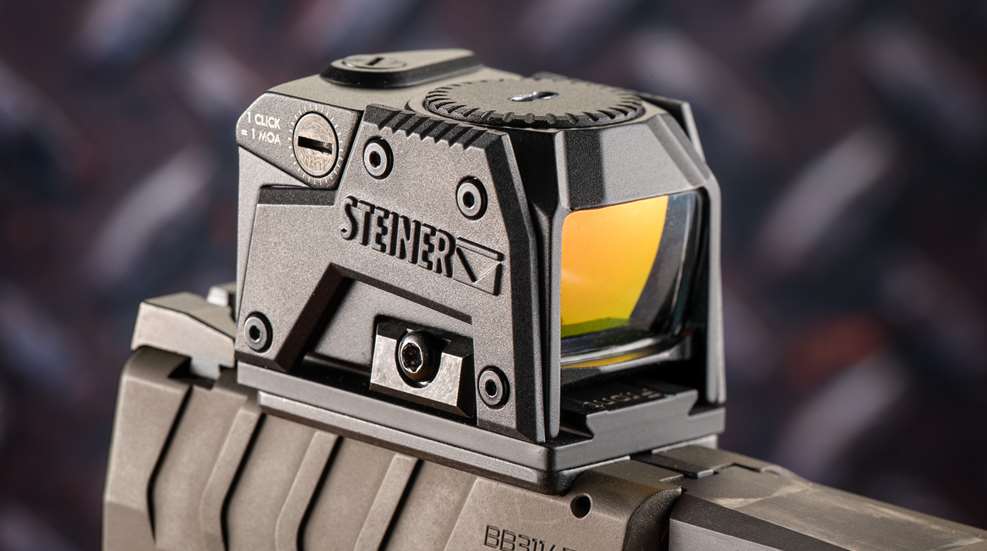
Most miniature red-dots on the market designed for use on pistols employ an open-emitter design in which the rear of the “screen” is exposed, but enclosed models are gaining in popularity. Steiner’s Micro Pistol Sight (MPS) is one such design.
Enclosed-emitter sights offer improved weather sealing for the optical elements and protection for the internal projector. Steiner claims the MPS is rated for water resistance down to 10 meters for up to two hours. The trade-off is a not-insignificant increase in weight and the perception of a larger profile. We measured the MPS at 1.8" long, 1.25" wide and 1.38" tall when including the adapter plate required to mount it atop a pistol. Our sample MPS, and its adapter plate, weighed 3.2 ozs. with a battery installed—that’s about 1½ ozs. heavier than most common open-emitter designs.
A screw-down compartment on top of the aluminum housing holds a single CR1642 battery. The 3.3 minute-of-angle (m.o.a.) dot has eight brightness settings, with the lowest two intended for night-vision use. Steiner claims that the battery will last 13,000 hours at setting No. 5. Unlike open-emitter designs, the projector of the MPS is located in the top of the optic; this allows the sight to sit lower into the slide and helps avoid unsightly reflections in bright light.
The thicker top of the housing, due to both the emitter and battery, creates a bolder “shadow” surrounding the glass. We did not find this to be distracting, but it is apparent when viewing through the sight. The objective lens of the MPS is 0.79" wide and 0.63" tall, while the ocular lens, closer to the eye, is 0.83" wide and 0.63" tall. The objective lens is recessed into the aluminum housing, offering added protection against impacts.
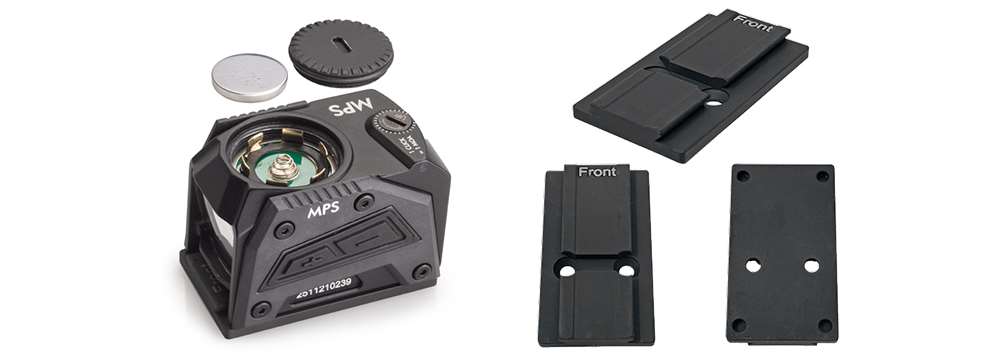
Out of the box, the MPS has an automatic shut-off feature that deactivates the emitter after 13 hours of inactivity. The timer can be turned off by holding down the “+” and “-” buttons simultaneously for 10 to 15 seconds. Otherwise, there is no direct way to turn the sight off, so deactivating the timer means the emitter will stay on until the battery exhausts itself in about 1.5 years (on setting No. 5).
Included in the box was the optic itself, an owner’s manual, a battery, a T-10 Torx-head tool and an adapter plate. Unlike many miniature red-dots that screw directly into the mounting surface, the Steiner MPS shares the Aimpoint ACRO footprint; this is a cross-bolt design resembling (but not compatible with) a small Picatinny mount. The included adapter plate allows the MPS to be installed atop pistols and plates that accept the common Docter footprint.
At the range, we found the 3.3-m.o.a. dot to be perfectly sized for a pistol sight; it’s large and bright enough to catch the eye but doesn’t obscure too much of the target. The glass is very clear, exhibiting only a modest amount of tint. Compared to other miniature dot sights, the MPS displays very little visual parallax shift when looking through the sight at off angles. The MPS sits low enough on some pistols that the factory-height sights are still visible at the bottom of the optic.
During the zeroing of the unit, we found its 1-m.o.a. adjustments to be true, with both a tactile and an audible click when moving between setting detents. The left-side brightness-adjustment buttons were easy to use, and the dot’s maximum brightness was more than enough for a bright day. In all, we found the Steiner MPS to be a competent miniature red-dot sight that is rugged enough for hard use in either competitive or defensive applications. Price: $575. Contact: Steiner (Dept. AR), 331 E. 8th St., Greeley, CO 80631; (888) 550-6255; steiner-optics.com.











